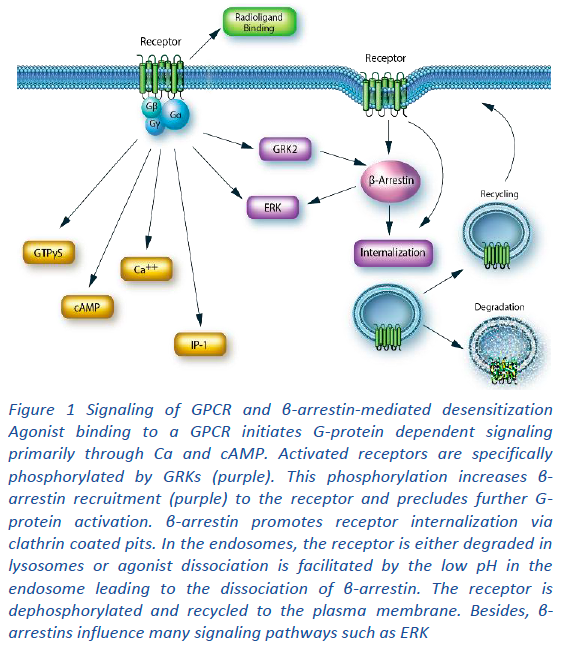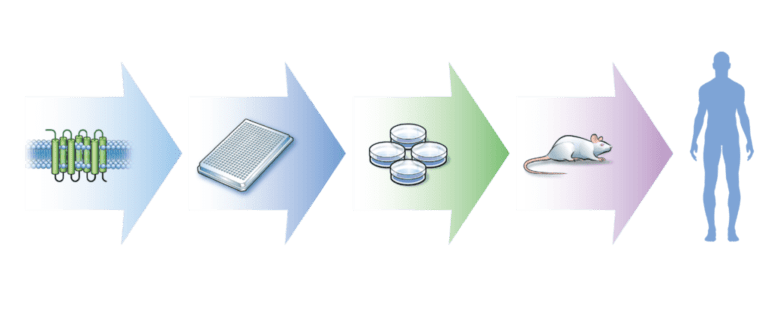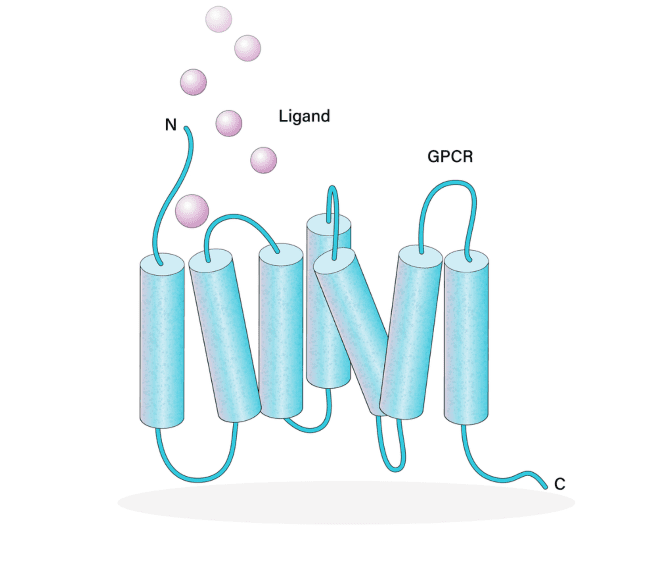Opportunities and challenges in targeting GPCR signaling
Introducing the MULTISCREENTM 235-GPCR Panel
Cell-based assays. The MULTISCREENTM 235-GPCR Panel utilizes receptor-dependent, G protein-coupled cellular secondary messenger readouts including calcium and cAMP (Figure 1). Cell-based assays directly capture the specific functional activity of a test compound in a biologically relevant context. They offer clear advantages over historical radioligand binding assays and as such offer an important phenotypic readout to complement data from such direct binding assays between the molecule and target. They can also help elucidate the mechanism of action of the ligand. Gaining these mechanistic readouts upfront, in a cellular context, adds tremendous value in understanding the potential impacts of target modulation as an aid to compound evaluation during lead generation.

Stable cell line clones. To perform reliable assays with a large panel of GPCR targets in high throughput, consistency is key. In the MULTISCREENTM 235-GPCR Panel, each GPCR target is expressed in a single, stable clonal cell line that has been carefully selected and rigorously characterized to ensure proper pharmacology with the receptor’s natural agonist. Native ligands are used as internal controls in every compound profiling experiment. Receptor expression levels have been optimized for the functional assays in all these stable clonal cell lines, which are also verified for their stability over multiple passages over a minimum period of 2 months. This ensures consistent expression of each GPCR over time, in contrast to transient transfections, which typically result in highly variable transgene expression levels between runs. Due to their expression consistency, the stable cell lines make it possible to establish, optimize and standardize a robust assay protocol for each GPCR target that can be followed as a reliable SOP every time. Therefore, this expansive set of cell lines collectively serves as a valuable cornerstone of comprehensive compound profiling and drug repurposing efforts, yielding robust and reproducible results.
Applications of the MULTISCREENTM 235-GPCR Panel
Compound profiling and lead generation
Addressing receptor similarity and molecular promiscuity
Evaluation of drugs with known function, but unknown mode-of-action
Repurposing of marketed drugs

References
- Cooke RM, Brown AJH, Marshall FH, Mason JS. Structures of G protein-coupled receptors reveal new opportunities for drug discovery. Drug Discovery Today. 2015;20(11). doi:10.1016/j.drudis.2015.08.003
- Hauser AS, Attwood MM, Rask-Andersen M, Schiöth HB, Gloriam DE. Trends in GPCR drug discovery: New agents, targets and indications. Nature Reviews Drug Discovery. Published online 2017. doi:10.1038/nrd.2017.178
- Christopoulos A, Changeux JP, Catterall WA, et al. International union of basic and clinical pharmacology. XC. Multisite pharmacology: Recommendations for the nomenclature of receptor allosterism and allosteric ligands. Pharmacological Reviews. 2014;66(4). doi:10.1124/pr.114.008862
- Devree BT, Mahoney JP, Vélez-Ruiz GA, et al. Allosteric coupling from G protein to the agonist-binding pocket in GPCRs. Nature. 2016;535(7610). doi:10.1038/nature18324
- Zhang WJ, Huai Y, Miao ZP, Qian AR, Wang YH. REVIEW article: Pharmacology Systems for Investigation of the Mechanisms of Action of Traditional Chinese Medicine in Drug Discovery. Front. Pharmacol., 2019; doi.org/10.3389/fphar.2019.00743
- Alhassen L, Dabbous T, Ha A, Dang LHL, Civelli O The Analgesic Properties of Corydalis yanhusuo. Review Molecules 2021; 10;26(24):7498. doi: 10.3390/molecules26247498. PMID: 34946576 PMCID: PMC8704877
- Liu SH, Chen PS, Huang CC, Hung YT, Lee MY, Lin WH, \ Lin YC, Lee AYL. PERSPECTIVE article: Unlocking the Mystery of the Therapeutic Effects of Chinese Medicine on Cancer. Front. Pharmacol., 2021; doi.org/10.3389/fphar.2020.601785
- Pushpakom S, Iorio F, Eyers PA, et al. Drug repurposing: Progress, challenges and recommendations. Nature Reviews Drug Discovery. Published online 2018. doi:10.1038/nrd.2018.168
- Cha Y, Erez T, Reynolds IJ, et al. Drug repurposing from the perspective of pharmaceutical companies. British Journal of Pharmacology. 2018;175(2). doi:10.1111/bph.13798
- Sriram K, Insel PA. G protein-coupled receptors as targets for approved drugs: How many targets and how many drugs? Molecular Pharmacology. 2018;93(4):251-258. doi:10.1124/mol.117.111062
- Chartier M, Morency LP, Zylber MI, Najmanovich RJ. Large-scale detection of drug off-targets: Hypotheses for drug repurposing and understanding side-effects. BMC Pharmacology and Toxicology. 2017;18(1). doi:10.1186/s40360-017-0128-7b



